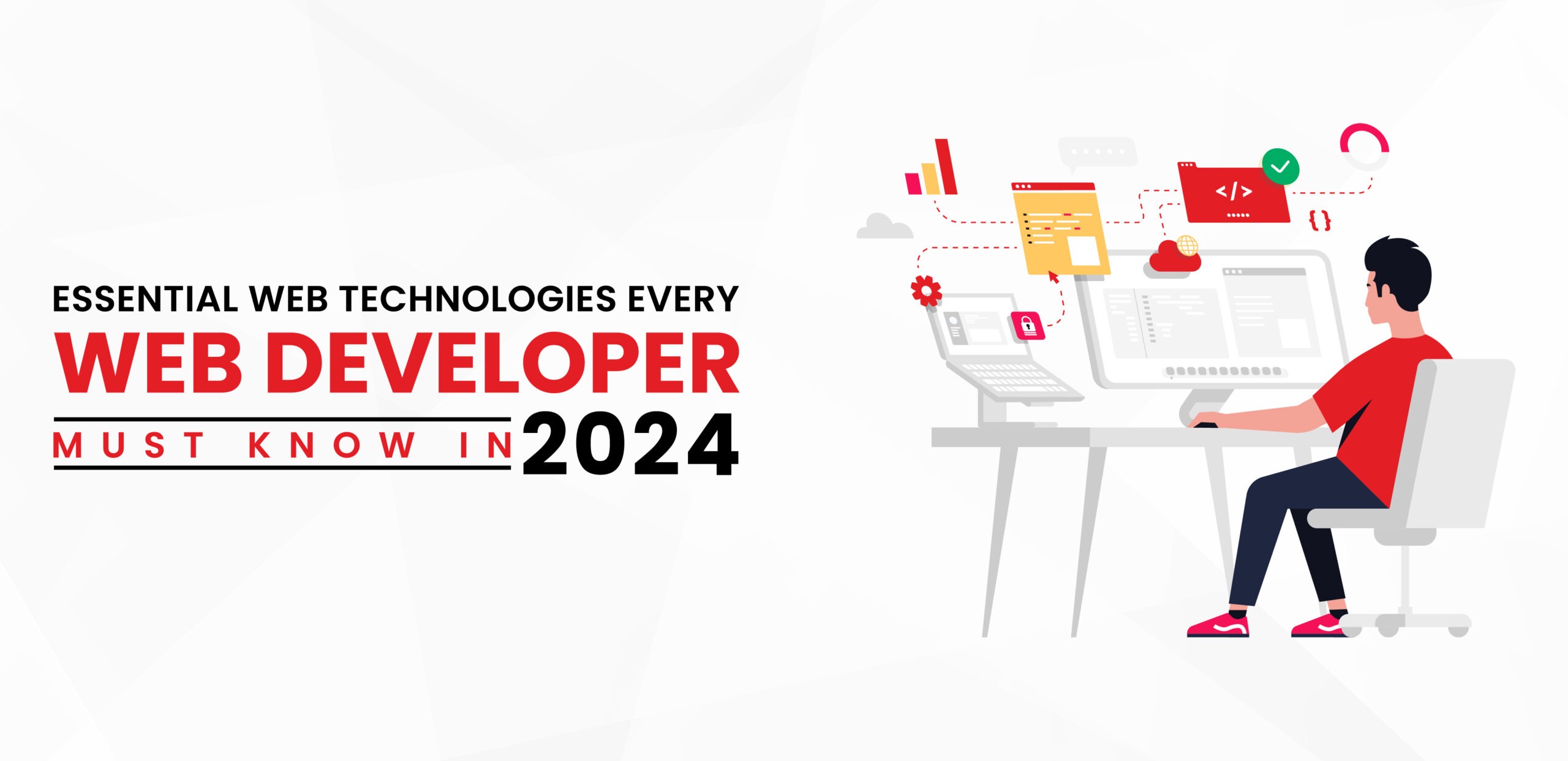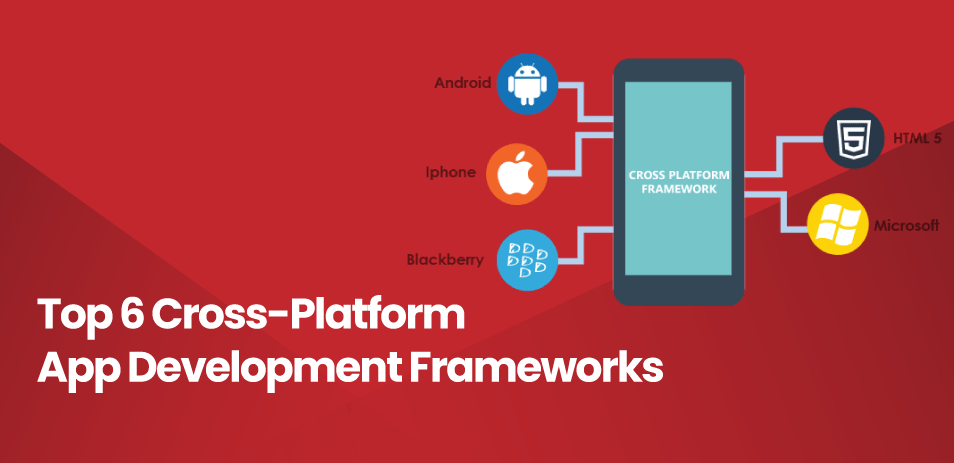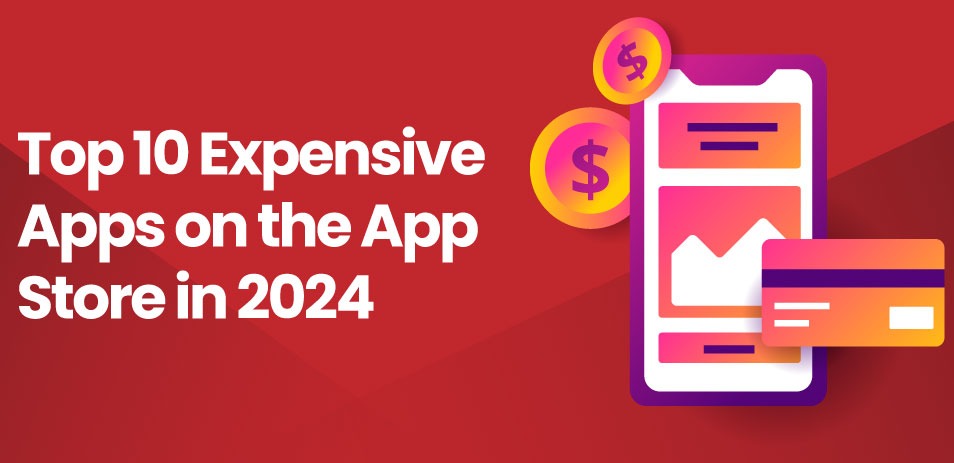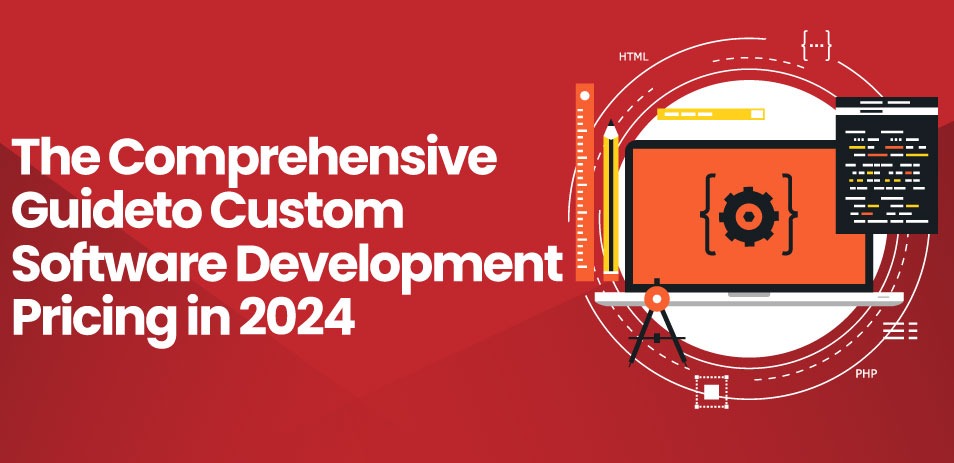In the ever-expanding digital landscape, databases stand as the foundational pillars upon which web applications are built. From social media platforms to e-commerce websites, databases play a pivotal role in storing, organizing, and retrieving vast amounts of data in real time. Their significance cannot be overstated, as they not only enable efficient data management but also ensure seamless user experiences across a myriad of online services.
- The global database management system (DBMS) market is expected to reach $124.7 billion by 2028, growing at a CAGR of 21.92%.
- 91% of businesses with over 11 employees utilize CRM software, which relies heavily on databases.
- 65% of businesses using CRM for mobile web development achieve their sales targets, highlighting the impact of robust databases. (Source: Nucleus Research)
- The mobile CRM market is predicted to grow at a 13% CAGR between 2019 and 2029.
- MySQL 12.02% of developers consider it a “most-wanted” skill, making it the most popular open-source database.
- Oracle Database holds the highest rank score for worldwide popularity (1260), but only 2.8% of developers mention it as a desired skill.
The Importance of Databases for Web Applications
Databases serve as the backbone of web applications, holding the critical data necessary for functionality. They provide a centralized repository for storing and organizing information, ranging from user profiles and product catalogs to transaction records and session data. Without databases, web applications would struggle to deliver dynamic content, personalized experiences, and real-time updates to users.
Whether it’s retrieving the latest social media posts, processing online orders, or managing inventory levels, databases enable seamless interaction between users and applications. Furthermore, databases play a vital role in ensuring data integrity, security, and scalability, essential factors for the smooth operation and growth of web-based services. In essence, databases are the silent engines that power the dynamic and interactive nature of modern web applications, making them indispensable components of the digital ecosystem.
Crafting Your Ideal Mobile App/Experience Starts Here!
Ready to elevate your business? Your custom app is just a click away.
Yes Let’s goTypes of Databases
Traditional Relational Databases
1- MySQL
MySQL stands as one of the most popular open-source relational database management systems (RDBMS). MySQL follows the client-server model and uses SQL (Structured Query Language) for managing and manipulating data. With support for multiple storage engines, including InnoDB and MyISAM, MySQL offers flexibility in data storage and retrieval.
Pros:
- MySQL boasts a user-friendly interface and straightforward setup process, making it accessible to developers of all levels.
- It supports horizontal scaling through techniques like replication and clustering, allowing for the efficient handling of growing datasets and user traffic.
- With a vast community of users and contributors, MySQL offers extensive documentation, tutorials, and forums for troubleshooting and collaboration.
- As an open-source solution, MySQL is free to use, making it an attractive option for startups and small businesses.
Cons:
- Compared to enterprise-grade databases like Oracle, MySQL may lack certain advanced features and capabilities, limiting its suitability for complex enterprise applications.
- In high-traffic environments or with large datasets, MySQL may encounter performance issues, particularly with intensive read and write operations.
- While MySQL supports transactions, some versions may not provide full ACID (Atomicity, Consistency, Isolation, Durability) compliance, impacting data integrity in certain scenarios.
2- PostgreSQL
PostgreSQL, often referred to as Postgres, is an advanced open-source relational database management system known for its robustness, extensibility, and adherence to SQL standards. It offers a wide array of features, including support for complex data types, transactions, and advanced indexing capabilities. PostgreSQL is highly regarded for its reliability, data integrity, and suitability for enterprise-level applications.
Pros
- PostgreSQL provides an extensive set of features, including support for JSON and XML data types, full-text search, and user-defined functions, making it suitable for a wide range of use cases.
- It ensures data consistency and reliability through full ACID compliance, making it a preferred choice for mission-critical applications requiring transactional integrity.
- Extensibility: PostgreSQL supports extensions and customizations, allowing developers to add functionality tailored to specific requirements without modifying the core database engine.
- With an active and vibrant community, PostgreSQL offers comprehensive documentation, mailing lists, and forums for assistance and collaboration.
Cons
- PostgreSQL can be resource-intensive, especially when dealing with large datasets or complex queries, requiring adequate hardware resources for optimal performance.
- Due to its extensive feature set and complexity, PostgreSQL may have a steeper learning curve compared to simpler database systems like MySQL, particularly for novice users.
- While PostgreSQL’s robustness is a strength, it may require more maintenance and monitoring compared to other databases, especially in environments with high concurrency and frequent updates.
3- Oracle
Oracle Database is a widely used proprietary relational database management system developed by Oracle Corporation. It is known for its scalability, reliability, and comprehensive feature set, making it a popular choice for large enterprises and mission-critical applications. Oracle Database offers various editions tailored to different use cases, ranging from small businesses to large corporations.
Pros
- Oracle Database is highly scalable and can handle massive volumes of data and user connections, making it suitable for enterprise-level applications with demanding workloads.
- It offers built-in features for high availability, including data replication, clustering, and automatic failover, ensuring continuous operation and minimal downtime.
- Oracle Database provides robust security features, including fine-grained access control, encryption, and auditing capabilities, helping organizations comply with regulatory requirements and protect sensitive data.
- Oracle offers a comprehensive suite of tools and utilities for database management, performance tuning, and monitoring, simplifying administration tasks for database administrators.
Cons
- Oracle Database is a commercial product, and its licensing costs can be significant, particularly for large deployments or enterprise editions with advanced features.
- Oracle Database has a reputation for complexity, requiring specialized knowledge and skills for installation, configuration, and maintenance.
- Organizations using Oracle Database may face vendor lock-in due to its proprietary nature, limiting flexibility and interoperability with other systems and technologies.
Also Recommended: WHAT IS ORACLE DATABASES? DIFFERENCE BETWEEN ORACLE VERSIONS 12C, 18C AND 19C
4- Microsoft SQL Server
Microsoft SQL Server is a comprehensive relational database management system developed by Microsoft. It is widely used for storing, managing, and retrieving data in a variety of applications, from small businesses to large enterprises. SQL Server supports various data types, including structured, semi-structured, and unstructured data, and provides robust features for data integration, analytics, and business intelligence.
Pros
- SQL Server seamlessly integrates with other Microsoft products and services, such as Azure cloud platform, Visual Studio IDE, and Power BI analytics tools, offering a cohesive and unified development and deployment experience.
- SQL Server provides built-in features for scalability, high availability, and performance optimization, including support for parallel processing, in-memory computing, and automatic tuning, ensuring efficient handling of large datasets and high transaction volumes.
- SQL Server offers advanced security features, including encryption, auditing, role-based access control, and dynamic data masking, to protect sensitive data and comply with regulatory requirements.
- SQL Server includes powerful business intelligence tools, such as SQL Server Reporting Services (SSRS), SQL Server Analysis Services (SSAS), and SQL Server Integration Services (SSIS), for data visualization, analysis, and reporting.
Cons
- SQL Server is a commercial product, and its licensing costs can be significant, especially for large deployments or enterprise editions with advanced features. Organizations may need to carefully evaluate the licensing options and consider factors like core-based licensing and Software Assurance for cost optimization.
- SQL Server primarily runs on the Windows operating system, limiting deployment options for organizations preferring other platforms like Linux or Unix. However, Microsoft has made efforts to expand SQL Server’s availability by introducing support for Linux and Docker containers in recent versions.
- SQL Server can be complex to administer and manage, requiring specialized knowledge and skills for tasks like installation, configuration, performance tuning, and troubleshooting. Organizations may need dedicated database administrators or consultants to maintain SQL Server deployments effectively.
NoSQL Databases
5- MongoDB
MongoDB is a leading open-source NoSQL database known for its flexibility, scalability, and performance. It employs a document-oriented data model, storing data in flexible JSON-like documents instead of traditional rows and columns. MongoDB is designed to handle unstructured or semi-structured data and is well-suited for use cases requiring high availability, horizontal scalability, and real-time analytics.
Pros
- MongoDB offers schema flexibility, allowing developers to store heterogeneous data structures within the same collection. This flexibility enables rapid iteration and adaptation to changing business requirements.
- MongoDB supports horizontal scaling through sharding and distributing data across multiple servers to accommodate growing datasets and user traffic. It can handle massive volumes of data and high concurrency with ease.
- MongoDB provides a powerful query language with support for complex queries, aggregations, and geospatial operations, empowering developers to express their data retrieval needs efficiently.
Cons
- MongoDB uses eventual consistency by default, which means that data consistency is not guaranteed in real-time across all replicas. This trade-off between consistency and availability may not be suitable for applications requiring strong consistency guarantees.
- In certain configurations, MongoDB may sacrifice data durability for performance, potentially leading to data loss in the event of hardware failures or crashes. Proper configuration and monitoring are essential to mitigate this risk.
- Managing and maintaining MongoDB deployments can be complex, especially at scale. Tasks like cluster management, data migration, and performance optimization require careful planning and expertise.
6- Cassandra
Apache Cassandra is a distributed NoSQL database designed for scalability, fault tolerance, and high availability. It is optimized for write-heavy workloads and linear scalability across multiple nodes. Cassandra uses a decentralized architecture with no single point of failure, making it suitable for mission-critical applications requiring continuous operation and resilience to hardware failures.
Pros
- Cassandra offers linear scalability, allowing organizations to add new nodes to the cluster seamlessly to accommodate growing data volumes and user traffic. This scalability makes it ideal for large-scale deployments with unpredictable growth patterns.
- Cassandra provides built-in features for fault tolerance and replication, ensuring data availability and durability even in the presence of node failures or network partitions.
- Cassandra offers tunable consistency levels, allowing developers to balance consistency and availability based on their application requirements. This flexibility enables organizations to tailor consistency guarantees to specific use cases.
- Cassandra supports a flexible data model with support for wide rows, collections, and nested data structures, enabling developers to represent complex data relationships efficiently.
Cons
- Designing data models for Cassandra can be challenging, especially for developers accustomed to relational databases.
- Cassandra deployments require careful planning and management to ensure optimal performance and reliability. Tasks like cluster configuration, data replication, and performance tuning can be complex and time-consuming.
- Achieving strong consistency in Cassandra can be challenging, especially in distributed environments with high latency or network partitions. Developers need to consider consistency levels and trade-offs when designing applications carefully.
7- Couchbase
Couchbase is a distributed NoSQL database that combines the flexibility of a document database with the speed of an in-memory caching layer. It offers a JSON-based document model and supports both key-value and SQL-like querying through its N1QL language. Couchbase is designed for high performance, scalability, and availability, making it suitable for a wide range of use cases, including real-time analytics, content management, and caching.
Pros
- Couchbase is optimized for high performance, with features like in-memory caching, data compression, and parallel processing, ensuring low latency and fast response times for read and write operations.
- Couchbase offers linear scalability, allowing organizations to scale out the cluster by adding new nodes dynamically to accommodate growing data volumes and user traffic. It supports automatic data rebalancing and replication for fault tolerance.
- Couchbase provides a flexible JSON-based document model, allowing developers to store and query complex data structures with ease. It supports dynamic schema evolution and flexible indexing for efficient data retrieval.
Cons
- Managing and maintaining Couchbase clusters can be complex, especially at scale. Tasks like cluster configuration, data rebalancing, and performance tuning require expertise and careful planning.
- Couchbase offers configurable consistency levels, but achieving strong consistency may come at the cost of performance or availability. Additionally, ensuring data durability in distributed environments can be challenging.
- Couchbase is a commercial product, and its licensing costs can be significant, especially for large deployments or enterprise editions with advanced features. Organizations may need to consider the total cost of ownership when evaluating Couchbase.
8- Redis
Redis is an open-source, in-memory data structure store known for its speed, simplicity, and versatility. It supports various data types, including strings, lists, sets, and hashes, and provides advanced features like pub/sub messaging, transactions, and Lua scripting.
Pros
- Redis is optimized for speed, with data stored entirely in memory for fast access. It can handle millions of operations per second and is ideal for use cases requiring low-latency data access.
- Redis supports a wide range of data types and data structures, including strings, lists, sets, and sorted sets, making it suitable for diverse use cases like caching, session management, and real-time analytics.
- Redis offers various persistence options, including snapshots and append-only files, for data durability. It also supports replication and clustering for high availability and fault tolerance.
- Redis includes built-in features like pub/sub messaging, transactions, and Lua scripting, enabling developers to build sophisticated applications with minimal effort.
Cons
- Redis stores data entirely in memory; the available memory size limits the amount of data that can be stored. Large datasets may require careful memory management and optimization.
- Redis uses a single-threaded architecture, which means that a single Redis instance can only handle one operation at a time. While this simplifies concurrency management, it can become a bottleneck for highly concurrent workloads.
- Managing Redis deployments can be complex, especially in distributed environments or with complex data structures. Tasks like data partitioning, replication, and failover require careful planning and configuration.
New and Emerging Databases
9- CockroachDB
CockroachDB is a distributed SQL database built to handle massive scale, with features designed to ensure consistency, scalability, and resilience. Inspired by Google’s Spanner, CockroachDB is designed to provide horizontal scalability, fault tolerance, and strong consistency across multiple nodes and data centers. It supports SQL queries, transactions, and ACID compliance, making it suitable for transactional and analytical workloads.
Pros
- CockroachDB offers horizontal scalability, allowing organizations to scale out the cluster by adding new nodes seamlessly. It automatically rebalances data and redistributes workload to maintain performance and availability.
- CockroachDB supports geo-distribution, enabling data replication and failover across multiple regions or data centers. This feature ensures data resilience and disaster recovery capabilities.
- CockroachDB provides strong consistency guarantees, ensuring that data is always consistent across replicas. It uses distributed consensus algorithms to achieve consistency without sacrificing performance or availability.
- CockroachDB is compatible with SQL, supporting standard SQL queries, transactions, and relational data modeling. This compatibility simplifies application development and integration with existing SQL-based tools and frameworks.
Cons
- Managing and maintaining CockroachDB clusters can be complex, especially at scale or in geo-distributed deployments. Tasks like cluster configuration, data partitioning, and performance tuning require expertise and careful planning.
- CockroachDB’s distributed architecture introduces performance overhead compared to single-node databases. While it provides scalability and fault tolerance, it may incur additional latency and resource consumption.
- CockroachDB’s unique architecture and distributed nature may require developers and administrators to familiarize themselves with new concepts and paradigms. Training and documentation may be necessary to utilize CockroachDB’s features effectively.
10- ScyllaDB
ScyllaDB is a distributed NoSQL database designed for high throughput, low latency, and linear scalability. It is compatible with Apache Cassandra but offers improved performance and efficiency through a rewritten storage engine in C++. ScyllaDB is optimized for modern hardware, leveraging multi-core processors, SSDs, and RDMA networking for maximum performance.
Pros
- ScyllaDB is optimized for high throughput and low latency, with support for millions of operations per second and sub-millisecond response times. It achieves this performance through a carefully engineered storage engine and efficient data processing algorithms.
- ScyllaDB offers linear scalability, allowing organizations to scale out the cluster by adding new nodes without sacrificing performance or availability. It supports automatic data distribution and rebalancing for seamless scalability.
- ScyllaDB is compatible with Apache Cassandra, supporting the same data model, query language, and client drivers. This compatibility simplifies migration from Cassandra to ScyllaDB and ensures interoperability with existing Cassandra ecosystems.
Cons
- Managing and maintaining ScyllaDB clusters can be complex, especially at scale or in distributed environments. Tasks like cluster configuration, data replication, and performance tuning require expertise and careful planning.
- Designing data models for ScyllaDB can be challenging, especially for developers accustomed to relational databases.
- While ScyllaDB has a growing community and ecosystem, it may not have the same level of support and resources as more established databases. Organizations may need to rely on documentation, forums, and community support for assistance and collaboration.
11- FaunaDB
FaunaDB is a distributed, serverless, and globally consistent NoSQL database designed for modern applications requiring strong consistency, scalability, and global reach. It provides a flexible data model, transactional capabilities, and ACID compliance, making it suitable for a wide range of use cases, including real-time applications, e-commerce, and gaming.
Pros
- FaunaDB offers strong consistency guarantees across multiple regions and data centers, ensuring that data is always up-to-date and consistent. It uses distributed consensus algorithms to achieve global consistency without sacrificing performance or availability.
- FaunaDB provides a flexible JSON-based data model, allowing developers to store and query complex data structures with ease. It supports nested documents, arrays, and indexes for efficient data retrieval and manipulation.
- FaunaDB supports ACID transactions, allowing developers to perform complex operations across multiple documents or collections with transactional guarantees. This feature simplifies application development and ensures data integrity and reliability.
- FaunaDB offers a serverless deployment model where developers can focus on building applications without worrying about infrastructure management. It automatically handles provisioning, scaling, and maintenance, allowing for seamless scalability and low operational overhead.
Cons
- FaunaDB’s serverless deployment model may incur higher costs compared to self-managed or on-premises solutions, especially for applications with unpredictable workloads or high traffic volumes. Organizations need to consider pricing plans and usage patterns to optimize costs carefully.
- While FaunaDB’s serverless model simplifies infrastructure management, it may limit organizations’ control over deployment configurations, performance tuning, and monitoring. Organizations may need to rely on FaunaDB’s built-in tools and monitoring capabilities for operational insights.
- FaunaDB’s unique architecture and distributed nature may require developers and administrators to familiarize themselves with new concepts and paradigms. Training and documentation may be necessary to utilize FaunaDB’s features effectively.
12- ArangoDB
ArangoDB is a multi-model NoSQL database that combines document, graph, and key-value models in a single database engine. It offers a flexible data model, powerful query language, and ACID transactions, making it suitable for diverse use cases, including social networks, content management, and IoT applications.
Pros
- ArangoDB supports multiple data models, including document, graph, and key-value, allowing developers to choose the right model for each use case. This flexibility enables seamless integration of different data types and relationships within the same database.
- ArangoDB provides a powerful query language called AQL (ArangoDB Query Language), which supports complex queries, joins, and aggregations across different data models. It simplifies data retrieval and manipulation, empowering developers to express their data requirements efficiently.
- ArangoDB supports ACID transactions, ensuring data consistency and reliability for complex operations spanning multiple documents or collections. This feature is essential for applications requiring transactional guarantees, such as e-commerce or financial systems.
Cons
- ArangoDB’s multi-model architecture and query language may have a learning curve for developers accustomed to single-model databases. Understanding how to leverage different data models and query capabilities effectively may require training and experimentation.
- While ArangoDB has a growing community and ecosystem, it may not have the same level of support and resources as more established databases. Organizations may need to rely on documentation, forums, and community support for assistance and collaboration.
- Managing and maintaining ArangoDB clusters can be complex, especially at scale or in distributed environments. Tasks like cluster configuration, data replication, and performance tuning require expertise and careful planning to ensure optimal performance and reliability.
Specialized Databases
13- TimescaleDB
TimescaleDB is an open-source time-series database built on top of PostgreSQL, combining the reliability and scalability of PostgreSQL with optimized performance for time-series data. It is designed to handle high volumes of time-stamped data efficiently, making it ideal for applications such as IoT, monitoring systems, and financial analytics.
Pros
- TimescaleDB leverages PostgreSQL’s scalability features, allowing organizations to scale out the database by adding new nodes dynamically. It supports automatic data partitioning and distribution for seamless scalability.
- TimescaleDB is compatible with SQL, supporting standard SQL queries, transactions, and relational data modeling. This compatibility simplifies application development and integration with existing SQL-based tools and frameworks.
- TimescaleDB benefits from the active PostgreSQL community, providing comprehensive documentation, tutorials, and forums for assistance and collaboration.
Cons
- Managing and maintaining TimescaleDB clusters can be complex, especially at scale or in distributed environments. Tasks like cluster configuration, data partitioning, and performance tuning require expertise and careful planning.
- TimescaleDB introduces new concepts and features for managing time-series data, which may have a learning curve for developers accustomed to traditional relational databases. Training and documentation may be necessary to utilize TimescaleDB’s features effectively.
- While TimescaleDB excels at storing and querying time-series data, it may not be suitable for all use cases.
14- InfluxDB
InfluxDB is an open-source time-series database designed for handling high volumes of time-stamped data with high write and query performance. It is optimized for IoT, monitoring, and real-time analytics applications, offering features like tag-based indexing, retention policies, and continuous queries.
Pros
- InfluxDB is optimized for high write throughput, with support for ingesting millions of data points per second. It uses a distributed architecture and efficient storage format to achieve fast write performance.
- InfluxDB supports horizontal scalability, allowing organizations to scale out the database by adding new nodes to the cluster. It supports automatic data partitioning and distribution for seamless scalability without sacrificing performance.
- InfluxDB provides a flexible query language for querying time-series data supporting functions for filtering, aggregating, and transforming data. It also offers continuous queries for performing real-time analytics and downsampling data for long-term storage.
Cons
- Managing and maintaining InfluxDB clusters can be complex, especially at scale or in distributed environments. Tasks like cluster configuration, data retention, and performance tuning require expertise and careful planning.
- InfluxDB introduces new concepts and query language for managing time-series data, which may have a learning curve for developers accustomed to traditional relational databases. Training and documentation may be necessary to utilize InfluxDB’s features effectively.
- InfluxDB’s focus on write performance may come at the cost of data durability, especially in the event of hardware failures or crashes. Proper configuration and monitoring are essential to ensure data integrity and reliability.
15- Neo4j
Neo4j is a graph database designed for storing, querying, and analyzing highly interconnected data. It uses a native graph storage and processing engine to represent data as nodes, relationships, and properties, enabling rich and expressive graph queries.
Pros
- Neo4j uses a native graph storage and processing engine, allowing for efficient representation and traversal of highly interconnected data. It stores data as nodes, relationships, and properties, enabling rich and expressive graph queries.
- Neo4j supports horizontal scalability through clustering, allowing organizations to scale out the database by adding new nodes to the cluster. It supports automatic data distribution and replication for seamless scalability without sacrificing performance.
- Neo4j benefits from an active community of users and contributors, providing comprehensive documentation, tutorials, and forums for assistance and collaboration.
Cons
- Managing and maintaining Neo4j clusters can be complex, especially at scale or in distributed environments. Tasks like cluster configuration, data replication, and performance tuning require expertise and careful planning.
- Neo4j introduces new concepts and query language for managing graph data, which may have a learning curve for developers accustomed to traditional relational databases. Training and documentation may be necessary to utilize Neo4j’s features effectively.
Crafting Your Ideal Mobile App/Experience Starts Here!
Ready to elevate your business? Your custom app is just a click away.
Yes Let’s goMaking the Right Database Decision for Your Web Application
When choosing a database for your web application, several factors should be considered to ensure it aligns with your specific requirements and constraints. These factors include:
1. Data Model
Evaluate whether your application requires a relational, NoSQL, graph, or specialized data model based on the nature of your data and the complexity of relationships between entities.
2. Scalability
Consider the scalability requirements of your application, including the expected growth in data volume and user traffic. Determine if the database supports horizontal scaling by adding more servers or nodes to the cluster.
3. Performance
Assess the performance characteristics of the database, including read and write throughput, latency, and response times. Consider factors such as indexing, query optimization, and caching mechanisms.
4. Consistency and Durability
Determine the consistency and durability guarantees provided by the database, such as strong consistency, eventual consistency, and ACID transactions. Ensure that the database meets your application’s requirements for data integrity and reliability.
5. Availability and Fault Tolerance
Evaluate the database’s availability and fault tolerance features, including replication, failover, and data redundancy. Determine if the database can withstand hardware failures, network partitions, and other disruptions without impacting service availability.
6. Security
Consider the security features offered by the database, including authentication, authorization, encryption, and auditing capabilities. Ensure that the database complies with regulatory requirements and industry standards for data protection and privacy.
7. Cost
Evaluate the total cost of ownership (TCO) of the database, including licensing fees, hardware infrastructure, maintenance, and operational costs. Consider both upfront and ongoing expenses to determine the long-term affordability of the database.
8. Ease of Use and Administration
Assess the ease of deployment, configuration, and management of the database, including tools and utilities provided for monitoring, backup, and troubleshooting. Consider the learning curve for developers and administrators when adopting a new database technology.
Conclusion
In web application development, selecting the appropriate database is paramount for ensuring optimal performance, scalability, and reliability. The choice hinges on a multitude of factors, including data model requirements, scalability needs, performance expectations, and security considerations. By carefully evaluating these factors and aligning them with the specific demands of your application, you can make an informed decision that lays a robust foundation for your project’s success.
Whether it’s the flexibility of NoSQL databases, the familiarity of relational databases, or the specialized capabilities of emerging solutions, each option offers unique advantages and challenges. Ultimately, the right database choice empowers developers to build resilient, efficient, and feature-rich web applications that meet the evolving needs of users and stakeholders. As technology continues to grow, staying abreast of advancements in database technologies ensures that your web applications remain competitive and adaptable in the ever-changing landscape of web development.








